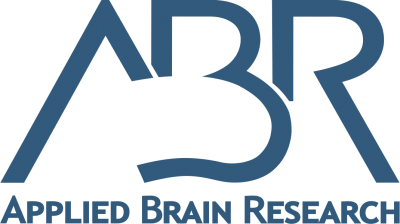New ABR Technology Lowers Power Consumption by 94% for Always-On Devices
WATERLOO, Ontario, September 14, 2020 (Newswire.com) - Applied Brain Research Inc. (ABR) today announced new software and chip designs that dramatically lower power consumption for speech-enabled devices such as wearables, smartphones, earpieces, smart speakers, and smart glasses.
ABR’s technology uses a new neural-network design, the Legendre Memory Unit (LMU), that reduces battery power consumption by as much as 94%1 for on-device AI tasks, such as spoken keyword processing. This breakthrough technology allows smart devices to deliver better and more accurate keyword recognition. It will enable smart-device makers to launch new and innovative speech-enabled products that consume less power and have longer battery lives.
The LMU is a recurrent neural network (RNN) that enables lower-power and more accurate processing of time-varying signals. The LMU can be used to build AI networks for all time-varying tasks, such as speech processing, video analysis, sensor monitoring and control systems.
In late 2019 ABR showed that the LMU significantly outperforms the AI industry’s go-to model for time-series AI processing, the Long-Short-Term-Memory (LSTM) network. The original LMU paper, presented at NeurIPS, proved that on the basic task of memorizing a time-varying signal, the LMU is 1,000,000x more accurate than the LSTM, while encoding 100x more time-steps. The LMU model is also smaller, using 500 parameters versus the LSTM’s 41,000, a 98% reduction in network size.2
ABR’s LMU-based keyword recognition system is lower-power and more accurate than previously available from companies like Google,3 DarwinAI,4 and Syntiant.5 ABR’s low-power keyword spotting technology runs on existing computer chips, as well as on ABR’s new LMU-based chip designs. The new ABR chip designs yield more power savings than using the LMU software implementations alone.
ABR’s LMU keyword-spotting hardware design consumes 24x less power relative to off-the-shelf edge hardware and 16x less power than special-purpose keyword-spotting hardware, 1 while using 91% fewer parameters. ABR’s technology understands spoken command words using only 8.8 millionths of a watt of electricity, compared with 140 millionths of a watt4 for existing technology used by device makers today. An ABR-powered keyword-spotting chip alone would run for more than 38 years on a standard watch battery (1,000 mAh lithium).
For more information about ABR’s LMU, speech networks and hardware-aware training technologies, download our latest white-paper “Hardware Aware Training for Efficient Keyword Spotting on General Purpose and Specialized Hardware” from https://arxiv.org/abs/2009.04465.
About Applied Brain Research Inc.
We are neuroscientists and AI engineers. We design AI inspired by the efficiency of brain circuits. We build AI chips and make software to build low-power embedded AI systems used in devices like smartphones, drones, robots, cars, cameras, clothing, wearables, and sensors. We also serve other AI developers with Nengo (www.nengo.ai), our AI software development suite. Nengo is a leading multi-hardware, visual, AI software development environment for neuromorphic applications and hardware-aware AI development.
The patented ABR LMU algorithm is available to be licensed from ABR for all forms of AI processing of any time-series data, such as speech, video, sensor data and control signals. ABR is using the LMU, along with its brain-inspired autonomous control technologies, to deliver low-power AI and cognitive AI systems for customers. We license our tools and technologies, as well as deliver fully engineered low-power and autonomous AI solutions, often on a fixed-price, guaranteed-delivery basis.
Contact Information:
Peter Suma, co-CEO
Applied Brain Research, Inc.
peter.suma@appliedbrainresearch.com
http://www.appliedbrainresearch.com
+1-416-505-8973
References:
1. https://arxiv.org/abs/2009.04465. 2020.
2. https://nips.cc/Conferences/2019/Schedule?showEvent=15733, 2019.
3. https://arxiv.org/abs/2005.06720. 2020.
4. https://arxiv.org/abs/2008.04245. 2020.
Source: Applied Brain Research Inc.
